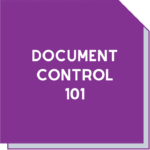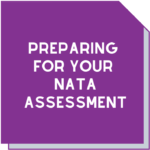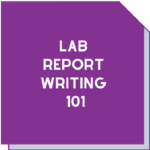The write stuff – documentation in your lab
 No matter what your area of expertise, all scientists and engineers know the importance of documentation.
No matter what your area of expertise, all scientists and engineers know the importance of documentation.
Lab documents allow you to review your activities. They help you to train your staff. Excellent documentation provides proof of accurate, reliable testing not just to clients but also to external accreditation or audit bodies.
In fact, the management of documents and records is an essential element of a lab quality system.
But how can you be sure your lab has the ‘write’ stuff when it comes to documentation?
What are they for?
Documents are for providing written information about processes, policies, and procedures.
They’re designed to communicate information and need to be updated and maintained. This means that they need to be clear and concise and most importantly, easily understood.
Generally speaking, lab documents can be defined as:
Policies – a statement of overall intent and direction. This is a broad and general direction for the quality system and in essence tells people which direction to head.
Processes – these are the steps used to implement the quality policy and achieve quality objectives. They are a set of interrelated or interacting activities that turn lab inputs into outputs. These explain how it happens.
Procedures – the specific, detailed, and step-by-step explanation of carrying out activities. These can be considered an explanation of how to do it.
Records – the pieces of information that prove what you did.
Document hierarchy
Think of the relationship between these sets of documents as a tree.
The policies are the roots because they form the base for all functions; the processes are the trunk, and the procedures are the branches.
If we follow through with the tree analogy, the fruit could be considered your lab’s outputs (records) which are hopefully abundant (although not necessarily tasty…).
Now if you have a brand-new lab, you’d be able to set up your documentation plan properly right from the start. Don’t decide a year down the track that you should have done it better!
But those with legacy systems can still ensure documentation is a seamless part of the organisation.
Keep it simple
Software and digital tools make this easier, but any standardised lab approaches to documentation across operations will also streamline this process. Using templates will ensure consistency of information and data collection and capture.
This will also make it easier for producing accreditation or certification documentation. For ease of access during audits, these should probably all be online.
Keep in mind that updates could mean that some software may not work, for example if you transfer work from Windows XP to Windows 7 there may be issues. Test on a small number of documents before a wholesale transfer, just in case.
The Notebook
Despite the abundance of file sharing systems and networked drives for lab information, there are some that still prefer The Notebook.
A written list of tasks and of course a ‘to do’ list is perfectly acceptable. But in a lab situation keeping critical data and information written in a personal notebook is a recipe for disaster.
Staff should be encouraged to use a method that makes these documents accessible to other lab staff as required. This additional level of transparency also means staff are accountable for their work.
Why am I doing this?
It may be tempting for staff to skip over documenting something they think is unnecessary or too time consuming for them to bother. Or perhaps they received a verbal instruction from a colleague, carried out the action but didn’t document it.
That’s why there must be adequate and ongoing training not only on completing relevant documentation but also to explain why. In particular, it’s important for staff to have clarity on what place the documents they’re completing have in the system. Seeing the whole picture should remove the temptation to skip over documenting a piece of work they don’t believe is relevant.
In essence, all systems depend on someone doing a thing. If someone doesn’t do that thing, the system fails.
Where did it go?
 You could have the best templates and documents in the world but they’re no good to anyone if you can’t find them!
You could have the best templates and documents in the world but they’re no good to anyone if you can’t find them!
Information is a major product of your lab, so manage it carefully with a good system.
Use a simple, easy to understand naming protocol. Be sure the names are logical and perhaps include a date in the title. ‘DavesTuesdaywork’ is unhelpful whereas ‘210202Clientxxx’ is easily searchable and makes much more sense.
If your lab is accredited or certified by an external body, you can guarantee that an auditor will want to see your documents and records. Since your documents reflect your lab’s organisation and quality management, it’s critical they’re in good order.
Good documentation
We’ve all seen instructions that make us scratch our heads such as those on dental floss. (I suspect that if you need instructions on how to use floss, this level of dental hygiene may be a little advanced for you).
However, in a lab setting, instruction documents must be unambiguous and accurate. They should be clear and concise and written in a style that takes into account who will be reading and using them.
Using a standard outline for documents can be helpful. Current staff will quickly become familiar with the structure and new staff will find documents with the same layout easy to navigate.
Of course, staff should know where to find and access documents, particularly those that relate directly to their role.
And finally, there should also be a system of managing these documents (document control). We’ll examine document control in a future article.
In the meantime, if you need support with your system, documents or any lab related activity, take a look at our training courses or email info@masmanagementsystems.com.au. We can provide support, advice or just a sympathetic ear!
You don’t have to do this alone!!
Download the article The write stuff






